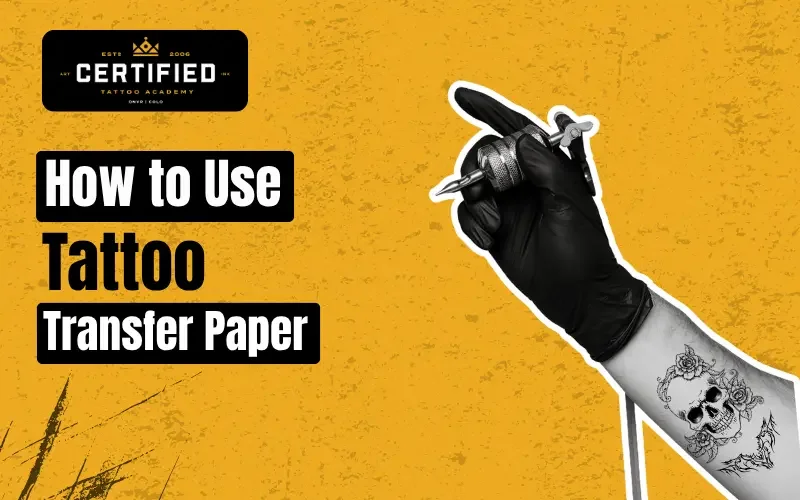How to Use Tattoo Transfer Paper: A Step-by-Step Guide for Beginners
Learning how to use tattoo transfer paper is one of the first practical skills every apprentice must master. Done correctly, a good stencil saves time, keeps lines accurate, and makes your tattooing smoother. Below I’ll walk you through the tools, the step-by-step process, DIY options when you do not have a thermal copier, and common mistakes to avoid.
What you will need
Professional stencil paper (spirit stencil paper or purpose-made tattoo stencil paper)
Stencil solution or transfer gel (skin-safe)
Design printed or hand-drawn on tracing paper or loaded into a thermal copier/printer as required
Thermal copier or a tattoo transfer paper printer if available (optional)
Clean cloth, razor or prep tool, gloves, and sanitary workstation
Step-by-step: creating and applying a tattoo stencil
1. Prepare the design
If your design is digital, mirror it before printing if you will trace or use direct-print methods that require flipping. For hand-drawn designs, place tracing paper over the artwork and transfer the linework cleanly. Keep line weight simple for stencils, reduce fine shading that will not transfer clearly.
2. Transfer design to stencil paper
Method A — Thermal copier or tattoo printer: place your design and spirit stencil paper into the machine per the manufacturer’s instructions. Thermal transfer delivers consistent, dark lines for complex work.
Method B — Hand trace: position stencil paper over the design and trace with a stylus or ballpoint to transfer the carbon/purple layer. This works well for simple layouts and when you do not have a thermal copier.
3. Prep the skin
Shave and clean the area with an approved skin disinfectant. Wipe with a small amount of stencil solution so the skin is slightly tacky but not wet. This helps the stencil adhere.
4. Apply the stencil
Place the stencil paper on skin with the transfer face down. Press gently and hold steady for the time recommended by your stencil product. Peel away the backing slowly to avoid smearing. Let the stencil dry for at least 30–60 seconds before touching.
5. Check placement and details
Confirm placement with the client and examine line clarity. If faint, you can touch up with a skin-safe marker. If smudged, remove and reapply after cleaning.
6. Begin tattooing
Work from the stencil lines to ensure accuracy. For guidance on needle work after stencil application, see our post on Tattoo Needles for Lining and Shading and How to Use a Tattoo Machine.
How to use tattoo transfer paper without thermal copier
If you do not have a thermal copier, hand trace using spirit stencil paper or use a stencil-printer service at a local shop. Another option is to print the design on thin tracing paper and freehand over the skin with a skin-safe marker for very simple pieces. These DIY methods are fine for practice and quick jobs but learn thermal methods for consistent professional results.
Buying and picking the best transfer paper
Choose transfer paper made specifically for tattooing. Spirit stencil paper is a common studio standard because it balances durability and transfer clarity. When searching, use queries like “tattoo transfer paper near me” or “where to buy tattoo transfer paper” and verify the product is labeled for skin use.
Troubleshooting: common mistakes and fixes
Stencil too light: Increase pressure when tracing or re-run through the thermal copier.
Smudging after application: Allow full drying time and use less transfer fluid.
Stencil peeling: Ensure skin is shaved, dry, and tacky, not wet.
Blurry lines: Simplify the design, remove extra shading from the stencil.
FAQ’s Around How to Use Tattoo Transfer Paper
-
No, but a thermal copier gives faster, more consistent results for detailed designs. Hand tracing will work for simpler pieces.
-
A properly applied stencil will last long enough for most sessions but avoid washing or excessive rubbing. Touch ups with a skin-safe marker are normal.
-
No. Use only stencil or transfer paper designed for tattoos. Craft papers are not made for skin and can fade or cause poor transfers.
-
Professional stencil papers are safe for use on skin. Always perform a client consultation and check for sensitivity to stencil gel or solution.

